Sequential finishes out 2022 with something new: a deep polysynth with an architecture that draws on the legacy of the Prophet-6 and OB-6, but stands next to them as a third classic electronic instrument. It’s a beautiful testament to the ideas of the late Dave Smith.
When Dave talked about what’s next for synths and Sequential in the video we ran recently, this was surely one of those new things he was excited to unveil. It’s a fitting tribute to one of the great electronic instrument builders that we get to see this final work – and hints at what may be in store for the Sequential to come.
Meet the Trigon-6 – the last design Dave Smith contributed to, and an all-new 6-voice analog synth in the form factor of the Prophet-6 and OB-6.
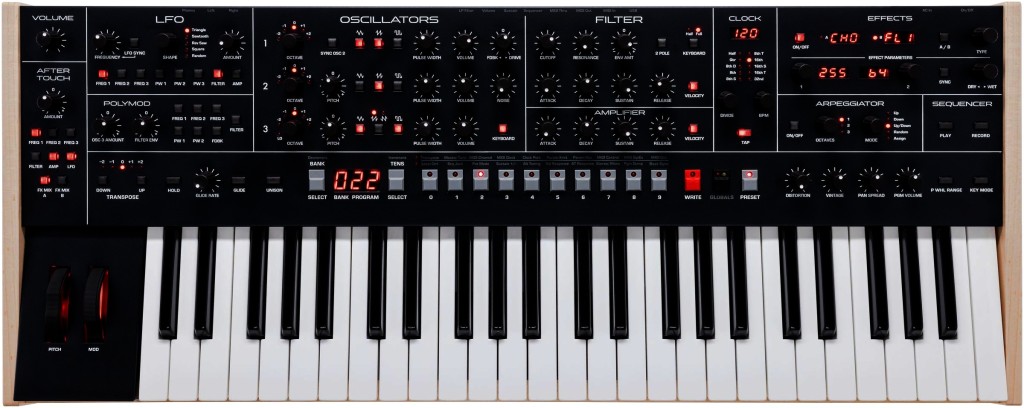
Onboard, you get a three-oscillator (tri-), 6-voice polyphonic (-6) design:
- Voices: 3 VCO + ladder filter, with 2- and 4-pole filters
- Waveshapes: simultaneously-selectable triangle, sawtooth, reverse sawtooth, and pulse with width control
- Complete analog signal path (including analog VCAs)
- Knob-per-function panel (as on OB-6 and P-6) – oh, and toggle off preset, and the instrument makes sound based on wherever the knobs are, for classic operation
- Modulation: Poly Mod, as loved on Sequential’s other creations, use filter envelope or oscillator 3 as bi-polar sources, destinations include osc 1 + 2 + 3 frequency and pulse width, low-pass filter cutoff, and feedback
- Unison mode with configurable voice count (1-6 voices)
- Dual digital effects with reverbs, delays (modeled and analog), chorus, flanger, pahse shifter, ring mod – 24-bit/48K processing, or bypass the digital effects to retain the fully analog signal path
- Stereo analog distortion
- Multimode arpeggiator, polyphonic step sequencer with up to 64 steps / 6 notes per step, polyphonic keyboard input, and external MIDI clock sync.
Price: US$3499 MAP (subject to change), available now.
With such important news, we of course turn to regular CDM guest Francis Preve, who worked on the Trigon as a sound designer. Here are Fran’s insights – and an intriguing comparison to one other classic from decades past.
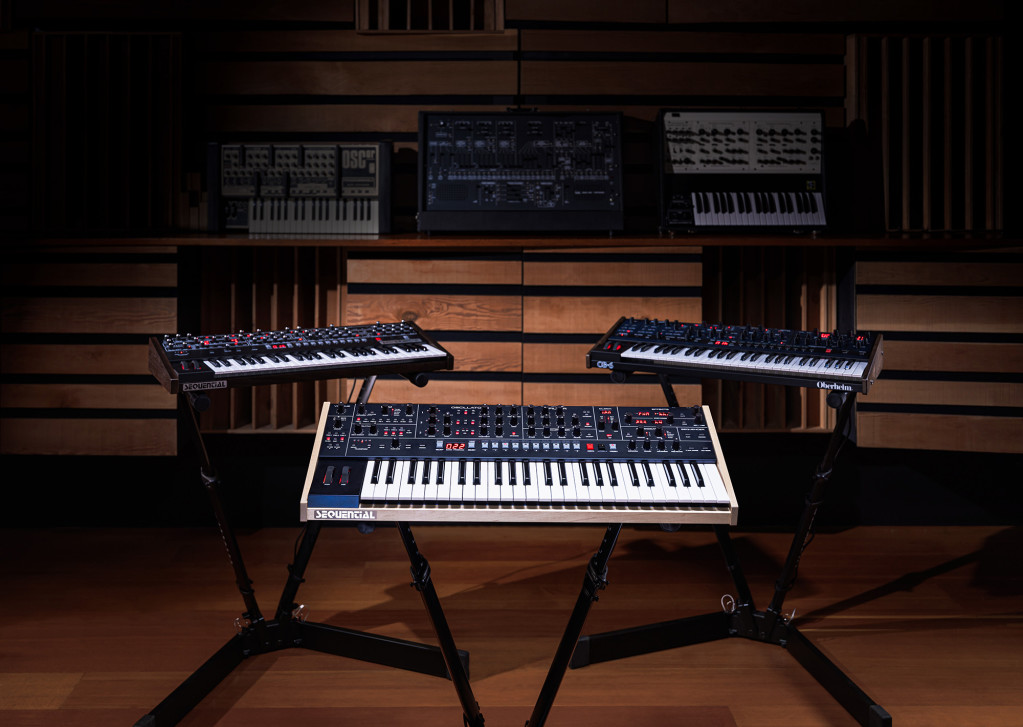
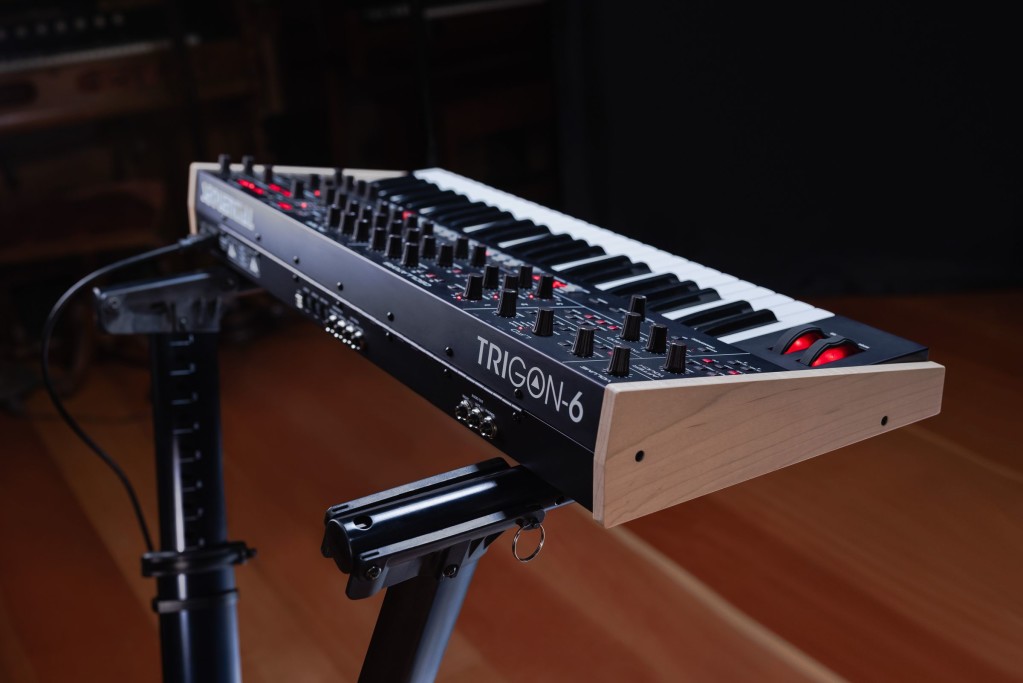
Hands on with Trigon-6
FRANCIS PREVE
Having been part of the design team for the majority of Sequential (and Oberheim) synths since 2016, I’m intimate with the specific audio flavor of each instrument. I personally own the OB-6 and Pro-3, but I’ve worked with /all/ of them at one point or another in my career, and the first thing I noticed about the Trigon-6 is that it’s… /very/ aggressive. Not just “big” or “phat” but in-your-face punchy.
There’s a reason for that.
Veteran synth connoisseurs will look at the front panel and quickly realize that the Trigon-6 is essentially a modern Memorymoog. In fact, the Trigon’s LFO routings and implementation are identical (with the addition of Amp and LFO sync on the Trigon) as is the Poly-Mod section, which includes all of the Memorymoog’s options along with a few added destinations.
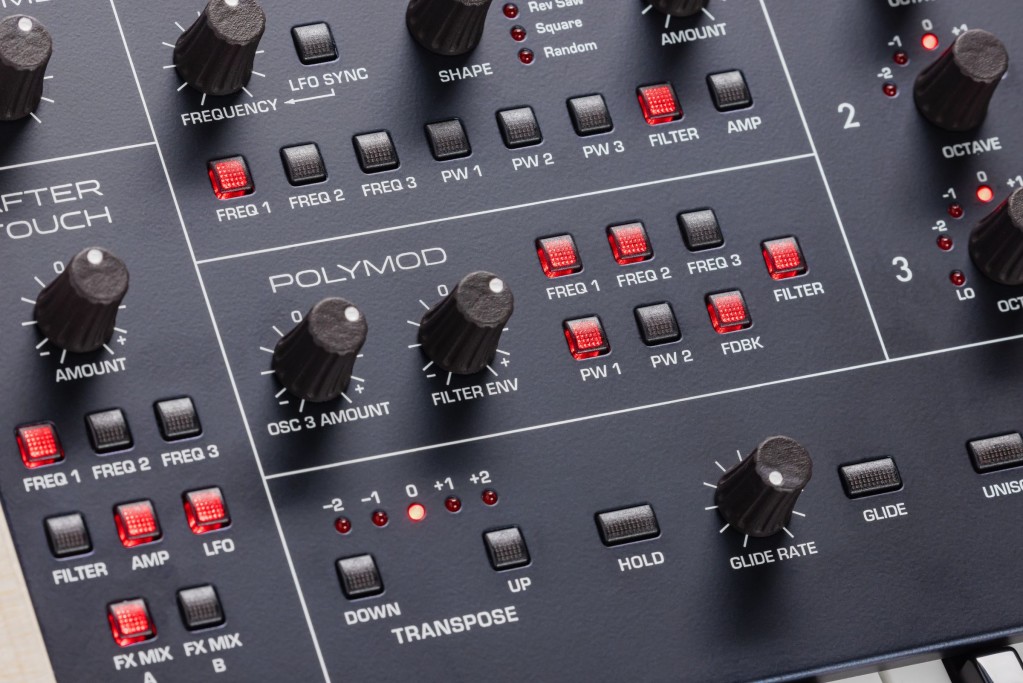
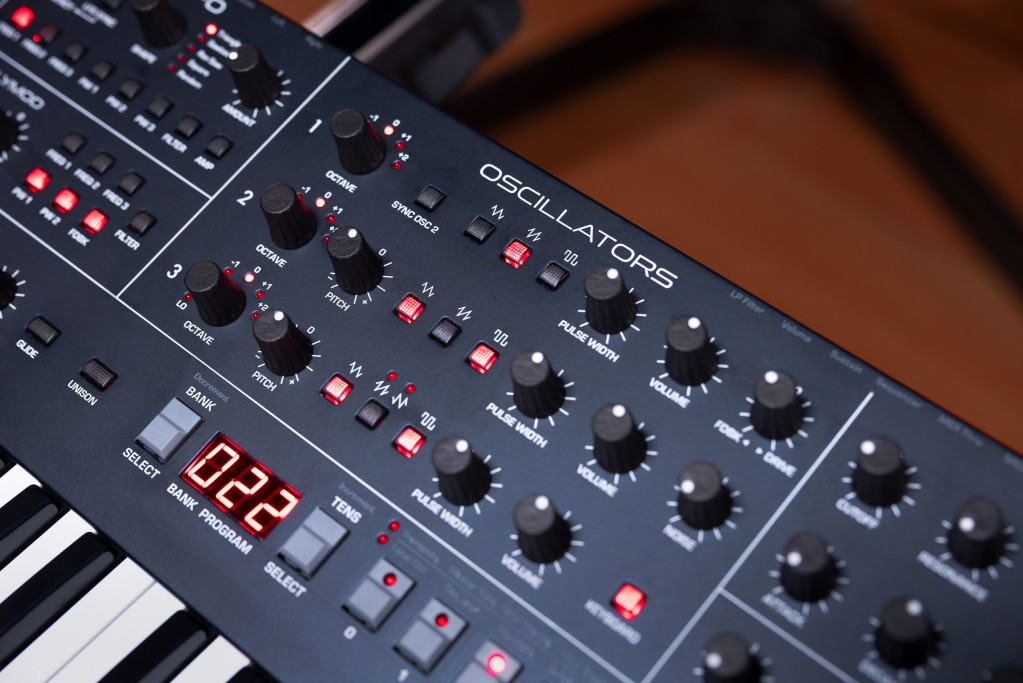
The Trigon’s three analog oscillators also mimic the Memorymoog with remarkable accuracy, including the ability to switch the third oscillator into LFO mode for modulation tasks (as well as audio-rate modulation, of course).
From there, Sequential takes a step into Minimoog territory with a dual-function Drive/Feedback knob that adds dirt and also replicates the vintage technique of routing a Minimoog output back into its external input. (For those with more recent synth experience, this is quite similar to Arturia’s “Brute Factor” knob). Naturally, there’s a noise generator in here too.
The Filter can be switched between 2- and 4-pole (12 or 24 dB per octave) modes and the resonance behaves appropriately in each mode. It’s /extremely/ Moog-like in 4-pole mode.
The rest of the architecture strongly evokes Dave’s now-classic Prophet-6 and OB-6 designs, with velocity switches for both filter and amp envelopes, as well as a comprehensive aftertouch section that includes many of the same destinations as the LFO. If you’re familiar with either of those synths, you’ll immediately recognize essential Sequential features like a friendly arpeggiator, basic step sequencing, and dual effects that include everything from chorus/flanging/phasing to multiple reverb types to ring modulation.
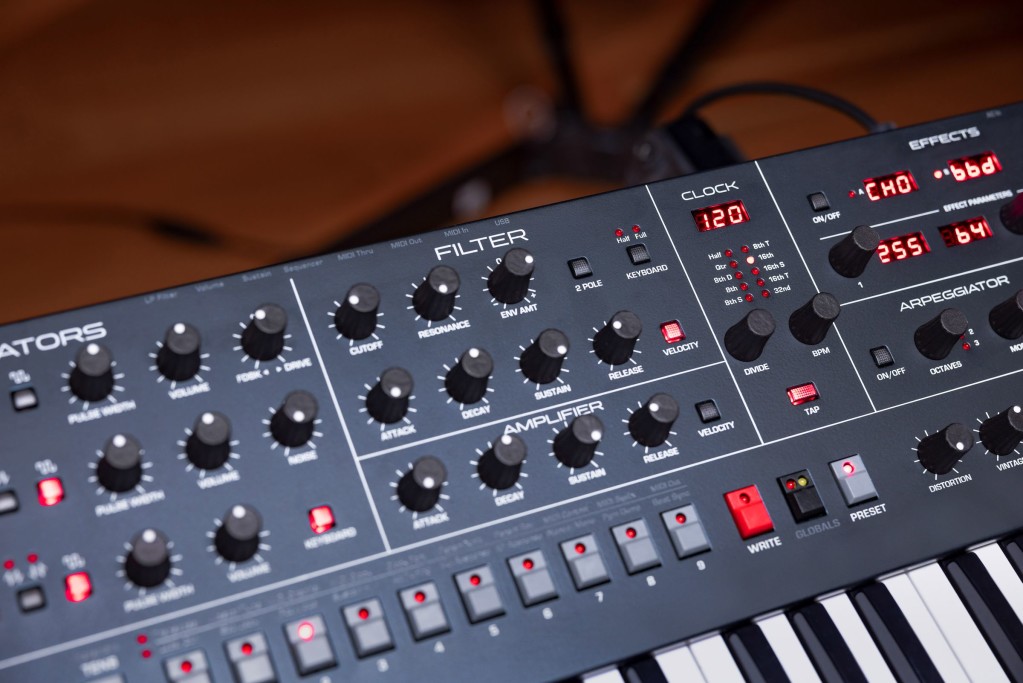
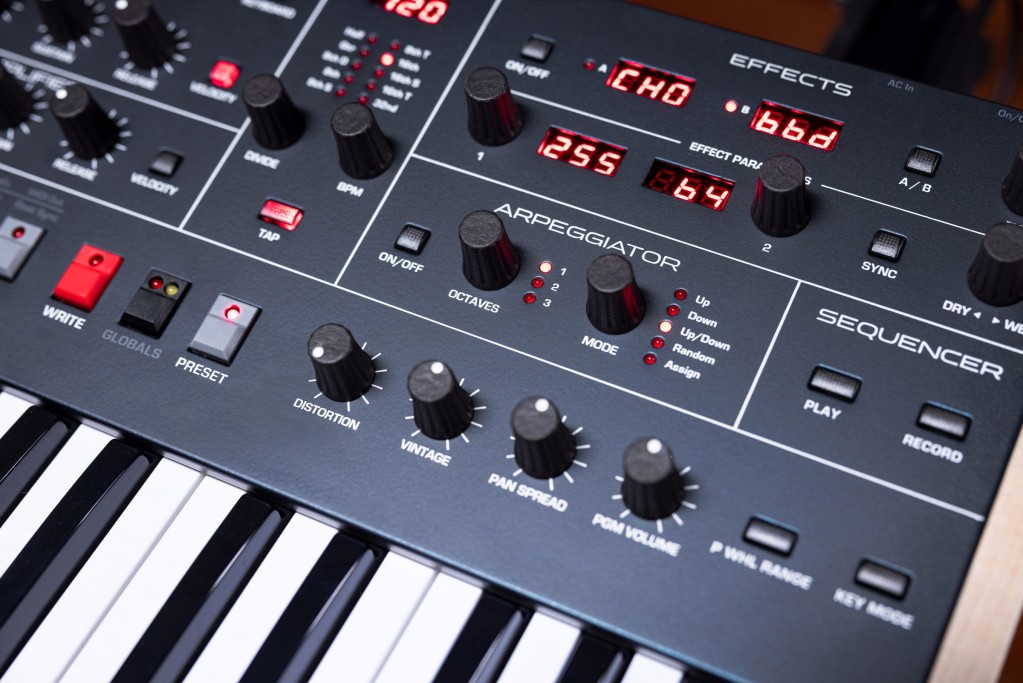
Sounds
Check Fran’s sound samples:
https://soundcloud.com/cdm/sets/sequential-trigon
We have a fully restored Memorymoog at my school and I’m quite familiar with its sound. While not being 100% identical, the Trigon is very much in the same sonic ballpark. If anything, the Trigon sound tilts a bit more toward a polyphonic Minimoog, but that’s academic. Even when I was designing smooth pad and string sounds, this beast snarls. Considering that the rest of the Sequential line-up excels at smooth and shiny textures, the immediacy and up-front sound of the Trigon will eventually place it on a lot of arena stages–and its gritty chaos also makes it a shoo-in for hard techno scene. It really stands out in a mix.
For the audio examples I created, all but two are completely dry – and thus monophonic (not stereo). There’s a cool per-voice panning feature on the synth, but for these examples, I wanted to capture the raw sound with minimal embellishment. That said, the integrated dual effects are a lovely enhancement when applied.
Supervillains. One final bit of trivia: DC comic fans may also recognize the name “Trigon” as one of the primary villains in the iconic Titans series. He’s a giant red demon from another dimension–a fitting analogy for this monstrous polysynth.
Previously: